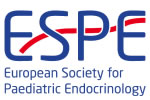ESPE2024 Rapid Free Communications Thyroid (6 abstracts)
Evaluation of thyroid nodules in children and adolescents by shear wave elastography (SWE)
Hanna Borysewicz-Sańczyk 1 , Filip Bossowski 2 , Katarzyna Anikiej 2 , Beata Sawicka 1 , Justyna Michalak 1 , Janusz Dzięcioł 3 & Artur Bossowski 1
1Department of Pediatrics, Endocrinology, Diabetology with Cardiology Divisions, Medical University of Bialystok, Bialystok, Poland. 2Student Research Group by the Department of Pediatrics, Endocrinology, Diabetology with Cardiology Divisions, Medical University of Bialystok, Bialystok, Poland. 3Department of Human Anatomy, Bialystok, Poland
Background: Shear wave elastography (SWE) is an ultrasound diagnostic method evaluating tissue’s stiffness. It has been demonstrated that the mechanical properties of tissue involved in the pathological process are changed and SWE might indicate regions of the examined tissue covered by the disease. In adults SWE is used to differentiate benign and malignant nodules in thyroid gland, however there are still few studies on application of SWE in thyroid diagnosis in children. The purpose of the study was to assess the application of SWE based on Young's modulus expressed in kPa in the management of thyroid nodules in children and adolescents.
Methods: 116 pediatric patients (81 girls and 35 boys) with 168 thyroid nodules were enrolled to the study and were qualified to SWE which followed fine needle aspiration biopsy (FNAB).
Results: According to the result of cytological examination presented in Bethesda system, nodules were qualified as benign (147 nodules with II category according to Bethesda system) and suspected (21 nodules with III, IV and V category according to Bethesda system). Benign cytological diagnosis were nodular goitre, parenchymal goitre, nodular colloid goitre or lymphocytic inflammation. Among suspected nodules 15 were diagnosed as III according to Bethesda system (AUS - Atypia of Undetermined Significance or FLUS - Follicular Lesion of Undetermined Significance in cytology), 1 nodule was diagnosed as IV according to Bethesda system (suspicious for follicular neoplasm - oxyphilic cell tumor) and 5 as V according to Bethesda system (suspicious for malignancy). There were no significant differences between TSH and fT4 concentration between benign and suspicious group. Patients with benign and suspected thyroid nodules were of comparable age. Mean SWE in benign nodules was statistically significant lower than in nodules with suspected cytology (42.22±16.69 vs. 57.4±24.0 kPa, P =0.0004). 6 patients from suspicious group revealed to be malignant in final histopathological examination.
Conclusion: The results of our study suggest that SWE might be a viable diagnostic method, however it still seems to need some adjustment in a group of pediatric patients.



